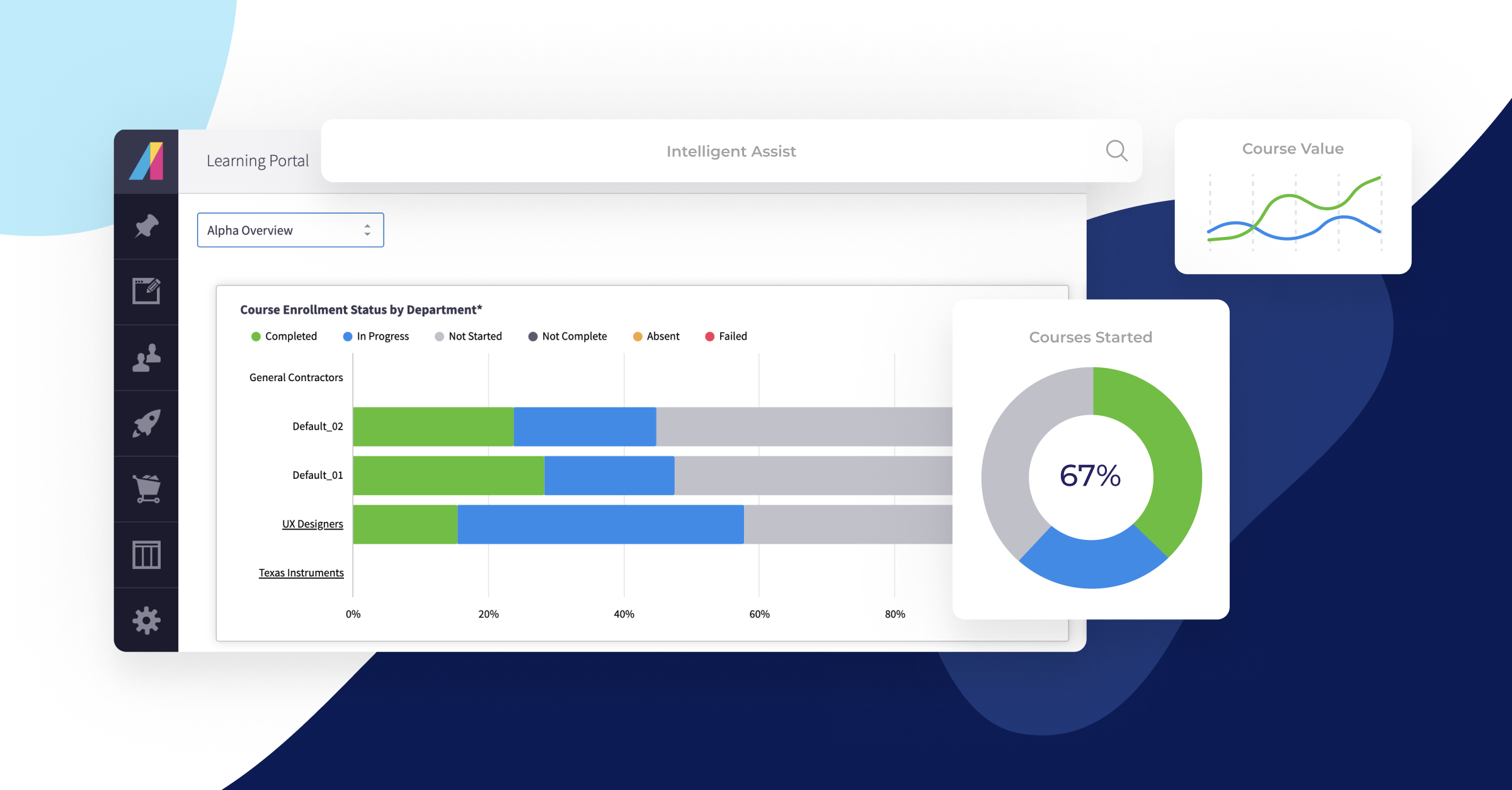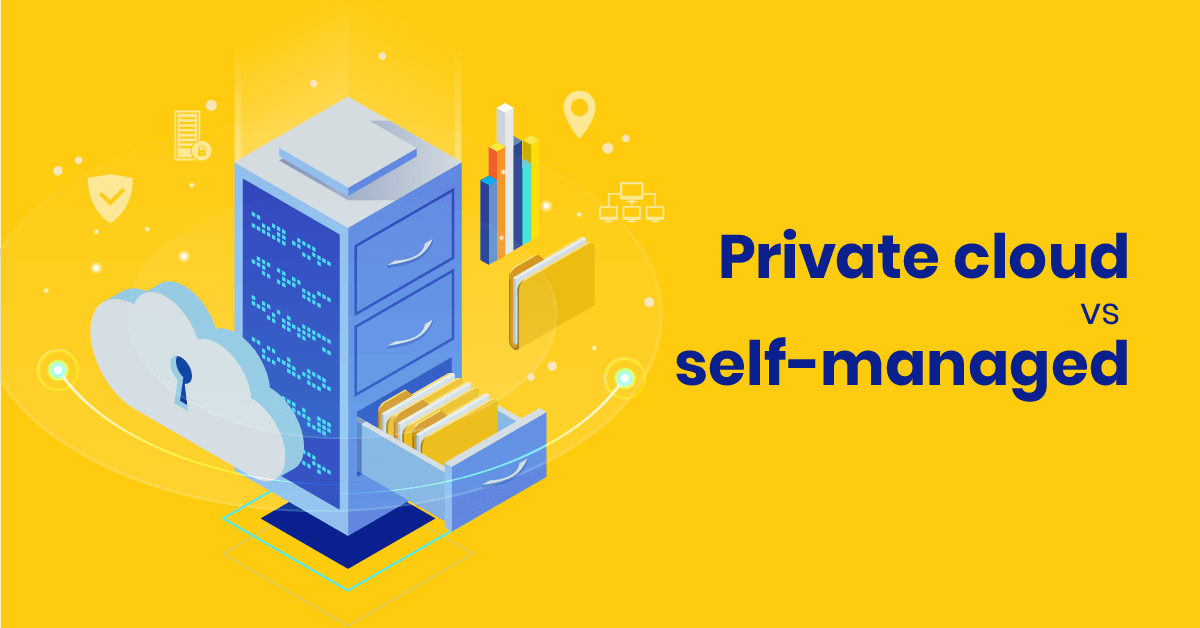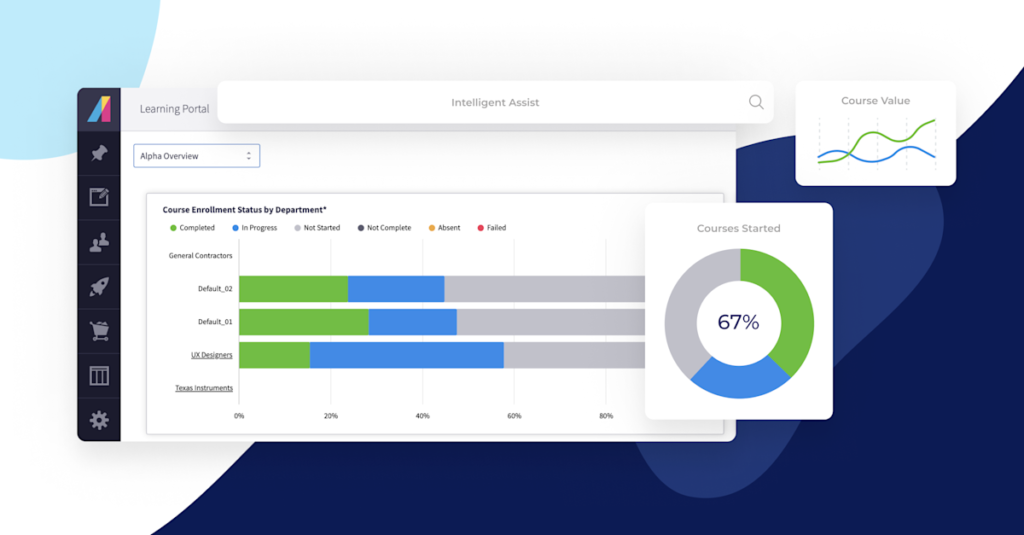Choosing the right Learning Management System (LMS) hosting solution for your organization is a decision that can shape the future of your training and development efforts. When it comes to cloud-based versus on-premise LMS, the choice you make could influence everything from cost efficiency to data security.
Are you aiming for seamless scalability, or do you prioritize complete control over your systems? With so many factors to weigh, understanding the fundamental differences between these two options is crucial. We’ll break down the essentials of cloud-based and on-premise LMS solutions, empowering you to make an informed decision that aligns with your organization’s unique needs and goals.
Whether you’re a small business looking to scale or a large enterprise focused on customization and security, this guide will help you determine which LMS hosting solution is the perfect fit for your growth plan. Dive in, and discover the insights that will drive your training strategy forward!

Credit: www.absorblms.com
Introduction: The Lms Decision That Impacts Everything
Choosing the right Learning Management System (LMS) hosting solution can deeply affect your organization. Cloud-based LMS platforms offer ease of access. Users can log in from anywhere, using any device. This flexibility supports remote work and learning. On the other hand, on-premise LMS solutions provide control.
Organizations manage their data and software directly. This option may be better for those with strict security needs. Cost is another important factor. Cloud-based systems often have subscription fees, while on-premise systems might require a larger upfront investment. Consider the technical expertise available within your team.
Cloud-based solutions reduce the need for in-house IT skills. On-premise solutions may demand more technical support. Evaluate these aspects to decide which LMS is right for your goals. Each option has its own benefits and challenges. Understanding your organization’s needs will guide you in making the best choice.
Understanding The Basics Of Lms Hosting Options
Choosing the right learning management system (LMS) hosting solution can be a challenge. Organizations must decide between cloud-based and on-premise options. Cloud-based LMSs store data online, allowing users to access it from anywhere. This flexibility is ideal for organizations with remote teams or multiple locations.
On-premise LMSs, on the other hand, store data on local servers. This means more control over data security and system customization. Costs can vary significantly between these options. Cloud solutions often have lower upfront costs, but ongoing subscription fees. On-premise systems may require a larger initial investment for hardware and maintenance.
Consider factors like budget, security, and scalability when making a choice. Each option has its own set of benefits and challenges. Understanding your organization’s specific needs will help in making the best decision.
What Is A Cloud Based Lms
A cloud based Learning Management System (LMS) operates over the internet. It does not need physical servers or hardware on site. This type of LMS is hosted on the vendor’s servers. Users access it through their web browsers. One big advantage is flexibility.
Employees can learn from anywhere. They just need internet access. Updates and maintenance are handled by the provider. This saves time and resources for organizations. Usually, these systems offer scalable solutions. As a company grows, the LMS can expand too.
Security is also a key feature, with data backups and protection managed externally. Additionally, cloud based LMS often have lower upfront costs. Subscriptions or pay-as-you-go models are common. This makes budgeting easier for many businesses. Moreover, it allows for easy collaboration and sharing of resources.
Overall, a cloud based LMS provides an efficient learning solution for modern organizations.
What Is An On Premise Lms
An on-premise LMS, short for Learning Management System, is a software that organizations host on their own servers. This means the organization is responsible for the installation, maintenance, and security of the system. Having the LMS on-site gives the company more control over data and customization options.
It suits organizations that have strict data privacy needs or specific regulatory requirements. Initial costs might be higher due to hardware and IT staffing needs. These systems require regular updates and troubleshooting by the organization’s IT team. Some businesses prefer on-premise solutions for their enhanced control and security.
It often works well for larger companies with the resources to manage it effectively.
Setup And Deployment Time What To Expect
Comparing setup and deployment time is crucial when choosing between cloud-based and on-premise LMS solutions. Cloud-based systems often offer quicker deployment because they do not require extensive hardware installations. Teams can start using the platform almost immediately after a straightforward setup process.
This option minimizes technical requirements and allows organizations to focus more on content creation and user training. On the other hand, on-premise LMS requires careful planning and coordination to install the necessary infrastructure. This involves purchasing servers, configuring networks, and ensuring security measures are in place.
The initial setup can take weeks or even months, demanding more resources and IT expertise. While cloud-based solutions provide a faster start, on-premise systems offer greater control and customization options. Organizations should weigh the trade-off between rapid deployment and tailored solutions based on their specific needs and capabilities.
Customization Flexibility And Control
Choosing between cloud-based and on-premise LMS can be tough. With on-premise systems, organizations have more control. They can customize the system to fit their needs. This means making changes to design or features. It’s like tailoring a suit. You make it fit just right.
On-premise gives you the ability to decide who can access the data. It keeps sensitive information secure within your own servers. Meanwhile, cloud-based LMS offers flexibility in a different way. Updates and upgrades happen automatically. This reduces the need for technical staff.
For those who need to change settings fast, cloud options might be simpler. On-premise solutions often require more time and resources. Think about your organization’s needs. Do you want full control? Or do you prefer ease of use? Deciding on the right fit can help achieve your goals.
Data Security And Compliance Considerations
Choosing between cloud-based and on-premise LMS solutions involves considering data security and compliance. Cloud-based LMS platforms often offer strong security measures, like encryption and regular updates. These platforms handle data across multiple servers, spreading risk and enhancing safety. Compliance with data protection laws is crucial.
Cloud providers usually ensure their systems meet these standards. On-premise LMS, on the other hand, gives organizations more control over their data. This means they can tailor security measures to specific needs. But, maintaining these systems requires more resources and expertise.
Keeping up with compliance can be challenging. Each option has its benefits. Organizations must weigh control against ease of management. Understanding specific security needs is key. This helps in making the right choice that aligns with organizational goals and regulatory requirements.
Cost Comparison Between Cloud And On Premise Lms
Choosing between cloud-based and on-premise LMS involves looking at costs. Cloud-based LMS often has lower upfront costs. This is because it requires no physical servers or hardware. Instead, you pay a subscription fee. This fee usually covers updates and maintenance.
On the other hand, an on-premise LMS involves higher initial investment. Buying hardware and setting up servers can be expensive. Plus, there are ongoing costs. These include maintenance, updates, and IT staff. Some organizations prefer cloud-based LMS for predictable monthly expenses.
Others choose on-premise LMS for long-term savings. Consider your budget. Think about the total cost of ownership. Both options have their benefits. Make sure to evaluate what works best for your organization.
Scalability And Maintenance In The Long Term
Choosing between cloud-based and on-premise LMS solutions can influence an organization’s scalability and maintenance needs. Cloud-based systems offer flexibility. You can increase or decrease resources easily. This means you pay for what you use. Maintenance is handled by the provider, reducing your IT team’s workload.
On the other hand, on-premise LMS solutions give you full control. You manage updates and customize as needed. But, scaling up requires new hardware and more IT support. Long-term, cloud systems may suit organizations with changing needs. On-premise might fit those valuing control and customization.
Cost considerations also play a role. Cloud solutions often have predictable monthly fees. On-premise may involve higher upfront costs. Each option has pros and cons. The best choice depends on your organization’s specific needs and future plans.
User Experience For Admins And Learners
Choosing between cloud-based and on-premise LMS solutions involves considering the user experience for both admins and learners. Cloud-based systems offer flexibility, allowing admins to manage the platform from anywhere, which is ideal for remote work environments. These systems often come with intuitive interfaces, making it easier for admins to navigate and perform tasks efficiently.
Learners benefit from cloud-based LMS as well. Access to learning materials from any device enhances convenience and supports diverse learning styles. On-premise LMS, on the other hand, may provide more control over customization and security, a priority for some organizations.
Admins might find it easier to integrate on-premise systems with existing infrastructure. Learners might appreciate stable access without internet dependency. Ultimately, the choice depends on specific organizational needs, focusing on ease of use, flexibility, and security preferences.
Which Lms Type Fits Your Organization Size And Goals
Choosing the right LMS depends on your organization’s size and goals. For smaller teams, cloud-based solutions offer flexibility and easy access. These systems allow users to connect from anywhere, making them ideal for remote work. Maintenance is minimal, as updates happen automatically.
Larger organizations often prefer on-premise systems. These provide more control and customization options. Security concerns are lessened because data stays on-site. Goals also play a role. If your aim is to expand quickly, a cloud-based LMS might be suitable due to its scalability.
On-premise systems are better for those prioritizing security and control. Cost is another factor. Cloud solutions typically have lower upfront costs but ongoing subscription fees. On-premise may have higher initial costs but fewer recurring expenses. Assess your needs carefully to make the best choice.
Final Thoughts: Match Your Lms To Your Growth Plan
Choosing the right LMS hosting solution depends on your organization’s growth plan. Cloud-based LMS platforms offer flexibility and scalability, allowing easy updates and access from anywhere. They often require less upfront cost and maintenance, making them suitable for fast-growing companies.
On the other hand, on-premise LMS provides more control over data security and customization. This option might be better for organizations with specific security requirements or stable growth patterns. Consider your future needs and current resources. Evaluate how each solution aligns with your long-term goals.
Think about your team’s technical skills and support requirements. Each LMS type has its own strengths. Match these with your strategic plan to ensure smooth integration and effective learning outcomes. The right choice will empower your team and support your organizational objectives.
Keep your growth plan in focus to make the best decision for your LMS needs.

Credit: www.efrontlearning.com
Frequently Asked Questions
What Is The Difference Between Cloud Hosting And On-premise?
Cloud hosting stores data online, offering scalability and remote access. On-premise stores data locally, requiring physical infrastructure. Cloud hosting reduces maintenance costs, while on-premise provides direct control. Each option suits different business needs and security preferences. Evaluate your requirements to choose the right solution.
What Is The Difference Between Cloud-based And On-premise Mobility Solution?
Cloud-based mobility solutions store data online, allowing remote access. On-premise solutions keep data locally, requiring physical maintenance. Cloud offers scalability and updates, while on-premise provides control and security. Choose based on business needs and budget constraints.
What Is Cloud-based Lms?
A cloud-based LMS is an online platform for managing, delivering, and tracking educational courses and training programs. Accessible via the internet, it offers flexibility, scalability, and real-time updates, enhancing learning experiences for users. Businesses and educational institutions use it to streamline training and improve learner engagement.
Is Cloud More Reliable Than On-premise?
Cloud solutions often offer higher reliability than on-premise systems. They provide automatic updates, scalability, and robust security features. Providers ensure continuous monitoring and support, minimizing downtime. Cloud infrastructure can handle unexpected traffic surges efficiently. Regular backups and disaster recovery options enhance data protection, making cloud a preferred choice for many businesses.
Conclusion
Choosing the right LMS hosting impacts your organization deeply. Cloud-based LMS offers flexibility and easy scaling. On-premise LMS provides control and security. Consider your organization’s size and goals. Think about customization needs and budget constraints. Evaluate security and compliance requirements.
Reflect on long-term maintenance and scalability. User experience matters for admins and learners. Match your LMS choice with growth plans. Each option has pros and cons. Make an informed decision for your success.



